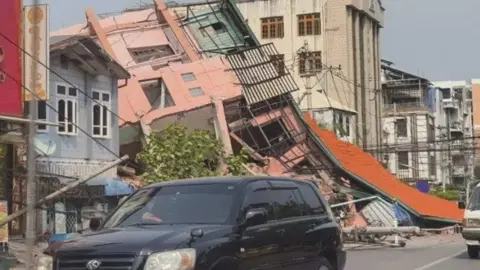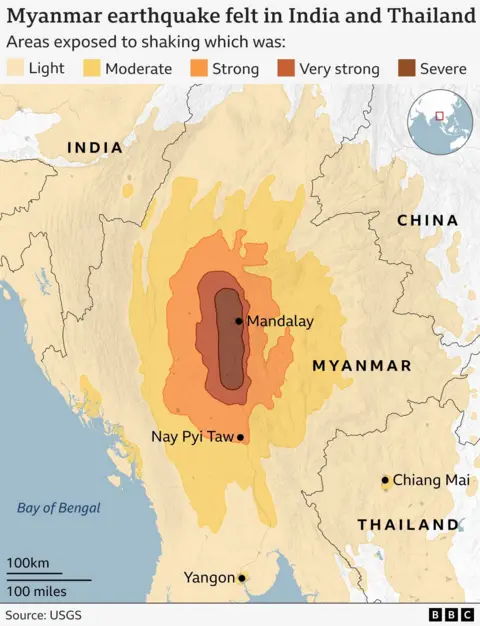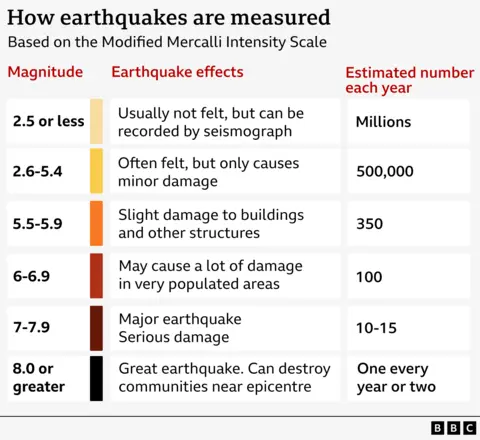 BBC Burmese Service
BBC Burmese ServiceA huge earthquake has hit central Myanmar.
The magnitude-7.7 tremor was felt elsewhere, including in Thailand and south-west China.
Hundreds are feared dead, although it is difficult to obtain accurate information.
Here is what we know so far.
Where did the earthquake strike?
The earthquake’s epicentre was located 16km (10 miles) north-west of Myanmar’s city Sagaing, at a depth of 10km (16 miles), the US Geological Survey (USGS) said.
This is near the city of Mandalay, Myanmar’s second-largest city with a population of about 1.5 million people, and about 100km north of the capital Nay Pyi Taw.
Which areas were affected?

In Myanmar, there are reports of roads buckling in the capital in addition to damage to buildings across the country.
Strong tremors were also felt elsewhere, including in Thailand and south-west China.
Eighty-one construction workers are missing after an unfinished high-rise building collapsed hundreds of miles away from the epicentre, in the Thai capital Bangkok.
A video also showed a rooftop pool in Bangkok spilling over the sides of a swaying building.
How deadly was it?
It may be a while before official casualty figures become known, but a member of a rescue team based in Mandalay has told the BBC that the number of deaths there “is at least in the hundreds”.
“That’s all we can say right now because the rescue efforts are ongoing,” they added.
What causes earthquakes?
The Earth’s crust is made up of separate bits, called plates, that nestle alongside each other.
These plates often try to move but are prevented by the friction of rubbing up against an adjoining one.
But sometimes the pressure builds until one plate suddenly jerks across, causing the surface to move.
They are measured on a scale called the Moment Magnitude Scale (Mw). This has replaced the better known Richter scale, now considered outdated and less accurate.
The number attributed to an earthquake represents a combination of the distance the fault line has moved and the force that moved it.
A tremor of 2.5 or less usually cannot be felt, but can be detected by instruments. Quakes of up to five are felt and cause minor damage. The Myanmar earthquake at 7.7 is classified as major and usually causes serious damage, as it has in this instance.
Anything above 8.0 causes catastrophic damage and can totally destroy communities at its centre.


